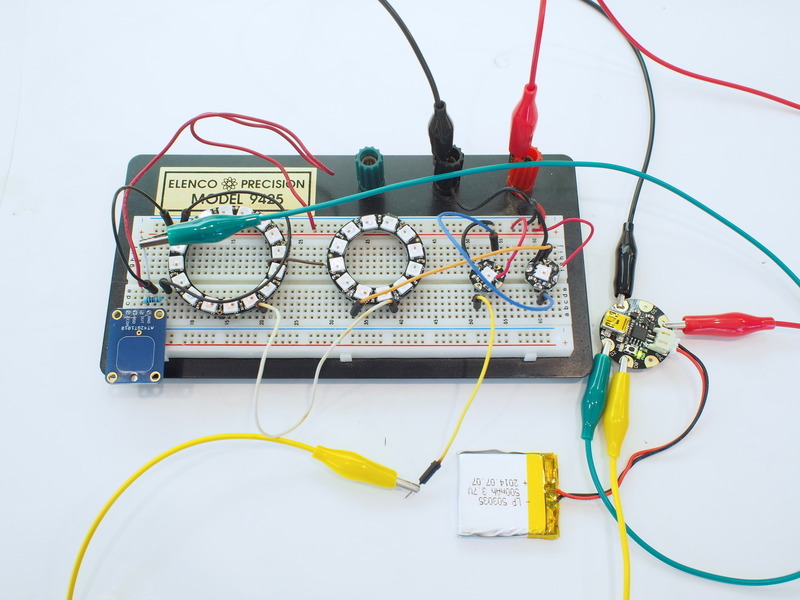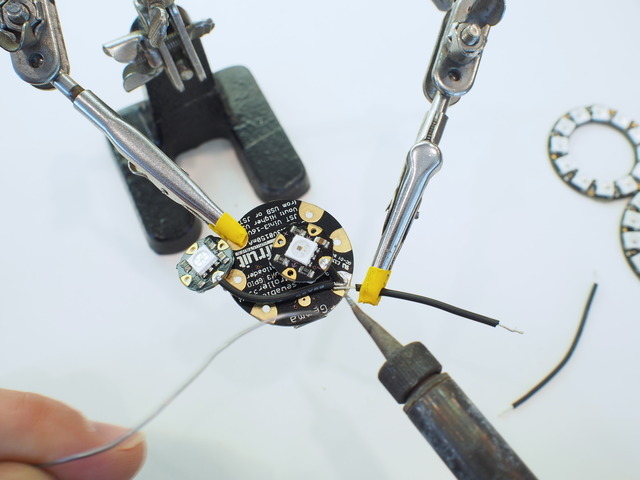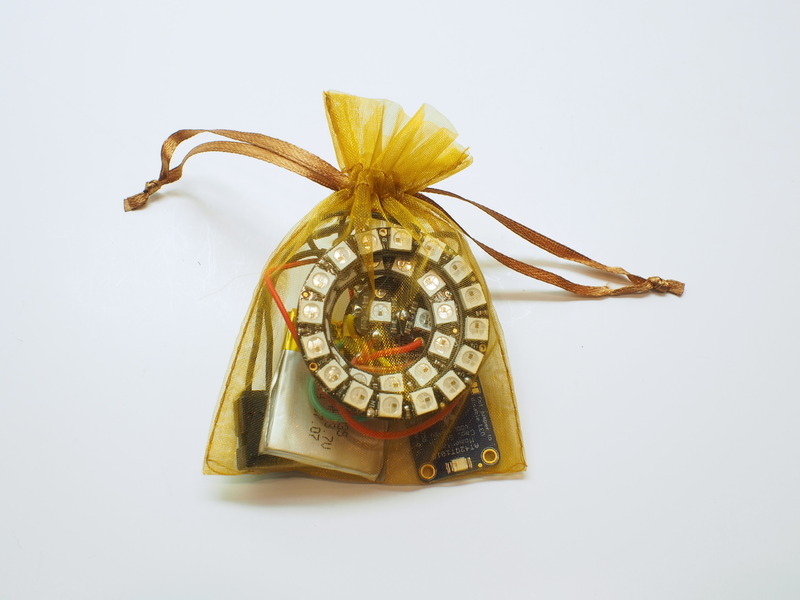No fairy costume is complete without a glowing pixie dust bag. This one uses a touch sensor to cycle through colors on the beautifully twinkling NeoPixel rings, all powered by a tiny GEMMA microcontroller. This sophisticated-looking, rechargeable prop is easy to build with just a little bit of soldering.
You'll need:
- Gemma M0 or Original Gemma (M0 type is recommended!) - can also substitute Trinket M0 or Trinket Mini
- RGB NeoPixel LEDs - two Flora pixels, one 12 x ring, and one 16 x ring
- Small translucent fabric pouch
- Scale model scenic snow in small plastic bag to diffuse pixels (or tissue paper, styrofoam beads, or another diffuser)
- 500mAh rechargeable lipoly battery and charger
- Tactile on/off switch
- Momentary capacative touch sensor
- 10k Ω resistor
- Heat shrink tubing or electrical tape
- Soldering iron and solder
- Solid core or stranded wire (20 to 26 gauge)
- Helping third hand tool
- Wire strippers
- Flush diagonal cutters
- Solderless breadboard, hookup wire, and alligator clips for prototyping
- Double-sided foam tape
- Needle and thread


























































































